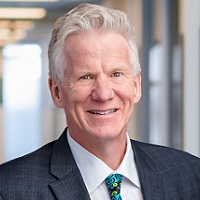 By Nick van Terheyden aka Dr Nick, Principal, ECG Management Consulting
By Nick van Terheyden aka Dr Nick, Principal, ECG Management Consulting
Twitter: @drnic1
Host of Healthcare Upside Down – #HCupsidedown
After years of existing on the periphery of the healthcare system, telehealth’s big moment arrived during the pandemic. Lockdowns and other mandates, along with fears of contracting COVID-19, kept many patients from seeking in-person care throughout much of 2020 and sporadically during the two years that followed. Virtual care platforms enabled patients to see their physicians from the comfort and safety of their homes.
Now that most restrictions are being lifted, many patients are keen to continue using telehealth. For many, it’s better than booking an appointment, taking time off from work, organizing child care, driving to a facility, finding parking, and waiting in a room with a dozen other people for what might be a brief visit with a physician. In light of patient preferences and money that healthcare organizations have poured into building or upgrading their telehealth infrastructure, virtual care is likely here to stay.
But what about the intimacy of an in-person consultation? Can providers and their patients still establish meaningful, human relationship as care moves increasingly online?
Episode NOW on Demand
Claus Jensen thinks so. “We’re heading for an environment where the good forces of healthcare will give you a more holistic, integrated experience.”
Claus is the chief innovation officer for Teladoc Health, where he oversees technology design, engineering, and clinical quality. On this episode he talks about new ways for patients and consumers to seamlessly interact with healthcare and technology. Here are a few excerpts.
Lack of intimacy in healthcare is not a new problem.
“There’s a fundamental paradox that’s existed for a long time in healthcare. It didn’t arise with the whole discussion about virtual. If you look at the last 100 years, maybe longer, specialization of healthcare means that you have to centralize the specialties. I spent time working for an academic medical center, and it’s an awesome place from the perspective of doing things that a local hospital could never do. But it’s not necessarily, by definition, local. We want that experience, that intimacy. We need a model that isn’t one or the other, but is the right combination—one that gives us the human, emotional connection, the right feeling and intimacy, but also allows us to leverage the best that the healthcare ecosystem has to provide.”
Integration is key.
“Integration is transformation. We don’t need to replace the existing system; we spent hundreds of years building the capabilities we have. We do need to integrate them better. And we need to supplement them with other choices, when that’s what people feel is the right thing to do. Not to replace the system, but to marry excellence with convenience.”
A hybrid model can support self-care, chronic care goals.
“There are ways we can use technology to help people with self-care. Self-care is hard. We all know what we should do, but we don’t always get the nudges on a day-to-day basis. Living with chronic conditions, for example, or living with mental health challenges, is hard. I can’t see a doctor or a nurse all the time. What do I have that helps me in between? I’m not talking here about technology replacing the clinical nature of the interaction. It’s augmenting the system. It’s amplifying the power of the resources.”
About the Show
The US spends more on healthcare per capita than any other country on the planet. So why don’t we have superior outcomes? Why haven’t the principles of capitalism prevailed? And why do American consumers have so much trouble accessing and paying for healthcare? Dive into these and other issues on Healthcare Upside/Down with ECG principal Dr. Nick van Terheyden and guest panelists as they discuss the upsides and downsides of healthcare in the US, and how to make the system work for everyone.
This article was originally published on the ECG Management Consulting blog and is republished here with permission.
